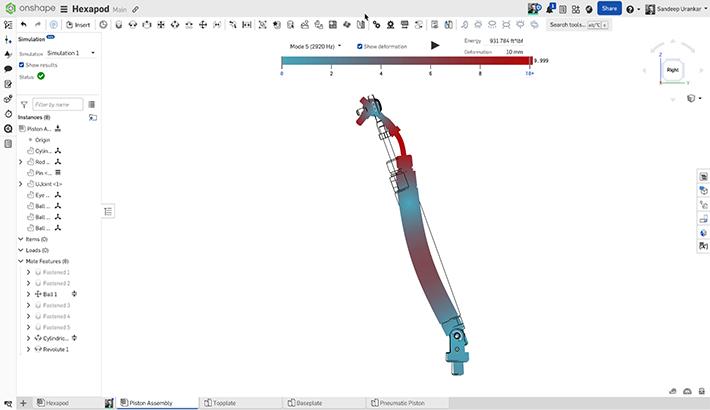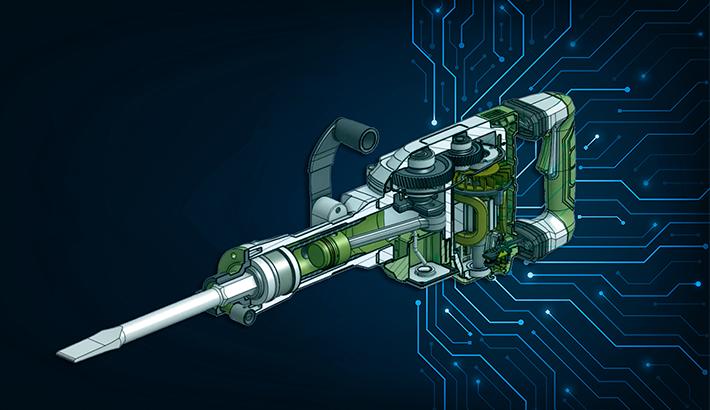
5:11
In the complex world of product design, engineering, and manufacturing, efficiency is paramount. Yet, many organizations unknowingly accumulate "design debt" through their reliance on traditional file-based CAD (Computer-Aided Design) systems.
Much like technical debt in software development – wherein small, expedient decisions compound into significant challenges over time – design debt manifests as a series of minor inefficiencies that collectively hinder productivity, collaboration, and innovation.
The Silent Accumulation of Design Debt
At first glance, file-based CAD systems appear robust and familiar, having been the industry standard for decades. Engineers and product designers are comfortable with their feature sets, and organizations have built extensive workflows around them. However, the very nature of these systems can lead to a proliferation of files that are difficult to manage, track, and synchronize.
Consider the daily operations within a design team:
- Multiple engineers work on different components of a larger assembly.
- Files are saved locally or on shared drives, often with minimal version control.
- Communication about changes relies heavily on emails or meetings.
Individually, these practices may seem innocuous. But over time, they contribute to a labyrinth of files that are prone to duplication, misplacement, and obsolescence.
A Thousand Cuts: How Issues Compound
The challenges posed by file-based CAD systems might seem manageable when viewed individually. However, like a thousand tiny cuts, these small issues accumulate, leading to significant inefficiencies that erode productivity and stifle innovation.
Version Control Nightmares
Without a centralized and robust version control system, tracking the latest design iterations becomes a daunting task. Engineers often waste valuable time searching for the correct files and verifying versions.
Collaboration Barriers
File-based CAD systems are inherently limited in supporting real-time, multi-user collaboration. Teams are forced into a sequential workflow, which slows down the design process and hampers collaborative innovation.
Data Integrity Risks
The manual handling of numerous files elevates the risk of file corruption, accidental deletion, and data discrepancies. Recovering lost or corrupted data diverts resources from innovation to remediation. Moreover, managing complex assemblies with thousands of interdependent part files becomes increasingly unwieldy, leading to broken dependencies and errors that are difficult to trace. These issues contribute significantly to project delays and increased costs.
Limited Scalability
File-based CAD systems can’t keep up as teams expand and projects grow more complex. Performance bottlenecks, costly upgrades, and downtime disrupt workflows, making scalability a constant struggle. These systems limit innovation and force organizations to either endure inefficiencies or face expensive overhauls.
The Impact on Business Outcomes
Increased Time-to-Market
Inefficiencies inherent in file-based CAD systems lead to delays in product development cycles. The sequential workflows and collaboration barriers extend project timelines.
According to CIMdata, “Companies are increasingly recognizing the limitations of traditional CAD systems in modern, connected environments. They report that many businesses lose significant productivity due to file-based management inefficiencies.”
Escalating Development Costs
The cumulative effect of inefficiencies leads to higher operational costs. The financial impact is not just in direct costs but also in opportunity costs associated with delayed innovation.
A survey conducted by Tech-Clarity in early 2023 found that organizations not utilizing modern, integrated CAD solutions experienced a significant rise in operational costs, with up to 30% attributed to rework and data management issues.
Compromised Product Quality
Data integrity risks and errors from mismanaged files can lead to design flaws that are expensive to correct later in the development process. These issues may even carry over into the final product, resulting in customer dissatisfaction and potential reputational damage. Ensuring high-quality outputs is challenging when underlying systems contribute to errors and inconsistencies.
According to a 2023 report by Lifecycle Insights, over 50% of manufacturers reported that data errors stemming from file-based CAD systems directly led to product defects and compromised quality.
These compounded impacts drain resources and erode a company's competitive advantage. Organizations may overlook these underlying issues, attributing problems to external factors rather than recognizing the need to modernize their design infrastructure.
4 Strategies to Mitigate Design Debt
Overcoming the inefficiencies of file-based CAD systems requires a strategic shift towards more modern, integrated approaches. By implementing the following strategies, organizations can reduce design debt and unlock greater efficiency and innovation.
Adopt Cloud-Based Collaborative Platforms
Transitioning to cloud-based design tools eliminates many issues inherent in file-based systems.
- Real-Time Collaboration: Teams can work simultaneously on the same design, reducing bottlenecks and fostering innovation through collective input.
- Centralized Data Management: A single source of truth ensures everyone accesses the most up-to-date information, minimizing errors due to outdated files.
- Scalability and Accessibility: Cloud platforms support large assemblies and can be accessed from anywhere, on any device, facilitating remote work and global collaboration.
Implement Robust Version Control Systems
Advanced version control is crucial for tracking design iterations and maintaining data integrity.
- Automated Tracking: Every change is recorded, allowing for easy rollback if necessary and clear accountability.
- Branching and Merging: Parallel development paths enable teams to explore different design options without interfering with the main project.
- Release Management: Implementing a standard release management workflow enables quality control.
Standardize Data Management Practices
Establishing clear protocols for handling data reduces errors and improves efficiency.
- Consistent Naming Conventions: Simplifies organization and retrieval, saving time and reducing confusion.
- Access Control: Defines user permissions to protect sensitive information and prevent unauthorized changes.
- Metadata Management and Governance: Instituting governance policies around data access, modifications, and archiving ensures that data integrity is maintained throughout the design lifecycle.
Integrate Product Lifecycle Management (PLM) Systems
A unified PLM system manages every aspect of a product's life, from conception to retirement.
- Holistic Oversight: Centralizes data across departments, ensuring consistency and facilitating informed decision-making.
Cloud CAD: Strategic Shift for Sustained Success
Design debt accumulates silently but has profound impacts on productivity and innovation. Addressing it requires deliberate action to implement modern tools and practices. By moving away from traditional file-based CAD systems and adopting cloud-native platforms, robust data management, and a culture of continuous improvement, organizations can eliminate the myriad of small inefficiencies that hold them back.
This strategic shift not only resolves current challenges but also sets the stage for sustained success in an increasingly competitive and fast-paced market. The commitment to evolve is an investment in the organization's future, unlocking potential that propels growth and fosters lasting innovation.
Eliminate Design Debt with Onshape
Learn how luxury boat builder De Antonio Yachts benefits from a unified cloud-native CAD system.
Latest Content

- Case Study
- Automotive & Transportation
Zero Crashes, Limitless Collaboration, One Connected Workflow With Cloud-Native Onshape
12.04.2025 learn more
- Blog
- Becoming an Expert
- Assemblies
- Simulation
Mastering Kinematics: A Deeper Dive into Onshape Assemblies, Mates, and Simulation
12.11.2025 learn more
- Blog
- Evaluating Onshape
- Learning Center
AI in CAD: How Onshape Makes Intelligence Part of Your Daily Workflow
12.10.2025 learn more
- Blog
- Evaluating Onshape
- Assemblies
- Drawings
- Features
- Parts
- Sketches
- Branching & Merging
- Release Management
- Documents
- Collaboration
Onshape Explained: 17 Features That Define Cloud-Native CAD
12.05.2025 learn more


